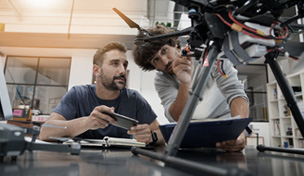Keywords: Imaging, Sustainable
Market Overview
The separation of hydrogen isotopes from one another is desirable for multiple purposes including nuclear fusion reactors, medical imaging, and cancer therapy. Current separation technologies are aqueous based and utilize isotope exchange or distillation systems. These methods are extremely expensive with large energy consumptions. In addition, the polymer membranes utilized in the hydrogen pumps formed from the separation methods exhibit mechanical issues which lead to damage and performance degradation. A Clemson University researcher has developed a non-aqueous based system, that is safe and durable. The global stable isotope labeled compounds market is projected to reach $312 million by 2024, growing at a CAGR of 3% from 2019 to 2024. This system can achieve high isotope selectivity, while being cost and energy effective.
Kyle Brinkman
2019-017
Applications:
Hydrogen Production, Hydrogen Isotope Separation
Technical Summary:
The method for separating hydrogen isotopes from one another comprises of a separation membrane with a sample including a first hydrogen isotope and a second hydrogen isotope. The separation membrane is comprised of a hydrogen isotope selective layer and a hydrogen ion conductive layer. A voltage is applied across the separation membrane from the first side of the membrane to the second side, at an elevated temperature. The voltage provides a driving force to selectively conduct the first hydrogen isotope across the separation membrane from the first side to a second side, thereby forming a product on the second side of the membrane that is enriched in the first hydrogen isotope, a remaining sample on the first side of the separation membrane being enriched in the second hydrogen isotope.
Advantages:
• Method for separation uses less power and a smaller carbon footprint than other current technologies
• This technology is simple to operate and works as a solid-state device
• Hydrogen separation is utilized in government and industry applications
Technology Overview
State of Development
Proof of Concept
Category
Serial Number
16/433,500
CURF Reference No.
2019-017
Inventors
Kyle Brinkman
For More Info, Contact:
Interested in this technology?
Contact curf@clemson.edu
Please put technology ID in subject line of email.
Contact
Latest News from CURF
Stay up-to-date with the latest trends in the innovation and research industry. Sign up for our newsletter to see how CURF is making a difference and impacting the economy where we live.









